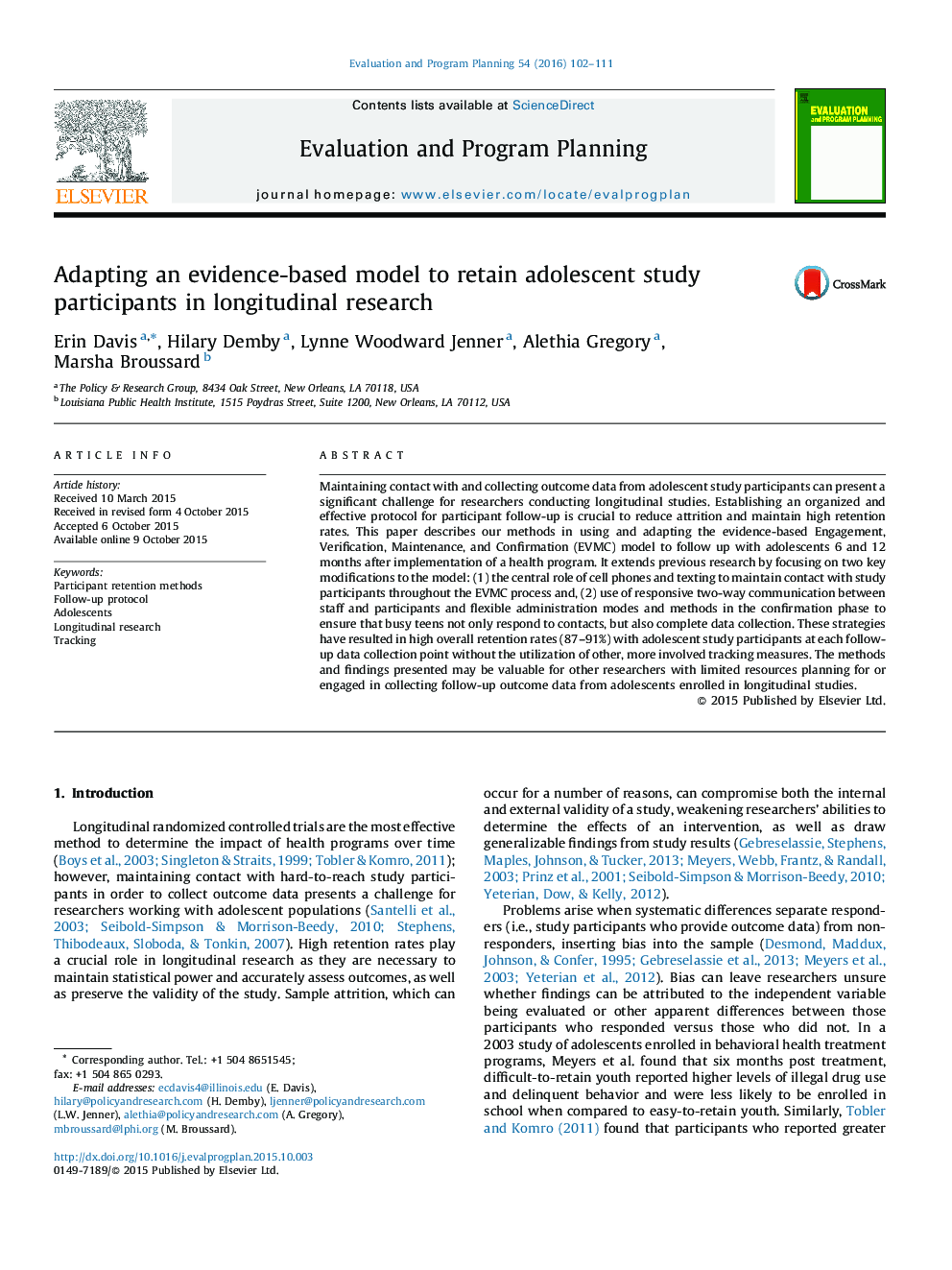| کد مقاله | کد نشریه | سال انتشار | مقاله انگلیسی | نسخه تمام متن |
|---|---|---|---|---|
| 322446 | 540044 | 2016 | 10 صفحه PDF | دانلود رایگان |
• We modified the EVMC Model to retain adolescents in a longitudinal RCT.
• Employed multi-modal data collection and detailed month-by-month tracking protocol.
• Achieved retention rates of 85–91% at 6- and 12-month data collection points.
• Cell phones played a vital role in maintaining contact with study participants.
• Staff flexibility and persistent communication were crucial for data collection.
Maintaining contact with and collecting outcome data from adolescent study participants can present a significant challenge for researchers conducting longitudinal studies. Establishing an organized and effective protocol for participant follow-up is crucial to reduce attrition and maintain high retention rates. This paper describes our methods in using and adapting the evidence-based Engagement, Verification, Maintenance, and Confirmation (EVMC) model to follow up with adolescents 6 and 12 months after implementation of a health program. It extends previous research by focusing on two key modifications to the model: (1) the central role of cell phones and texting to maintain contact with study participants throughout the EVMC process and, (2) use of responsive two-way communication between staff and participants and flexible administration modes and methods in the confirmation phase to ensure that busy teens not only respond to contacts, but also complete data collection. These strategies have resulted in high overall retention rates (87–91%) with adolescent study participants at each follow-up data collection point without the utilization of other, more involved tracking measures. The methods and findings presented may be valuable for other researchers with limited resources planning for or engaged in collecting follow-up outcome data from adolescents enrolled in longitudinal studies.
Journal: Evaluation and Program Planning - Volume 54, February 2016, Pages 102–111
